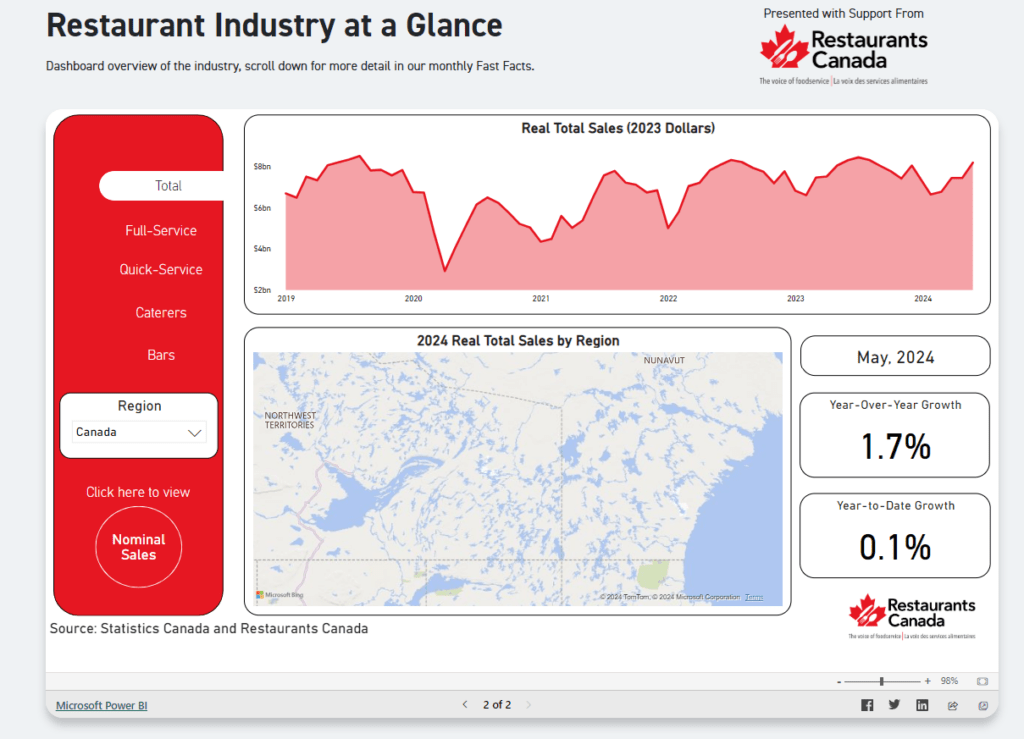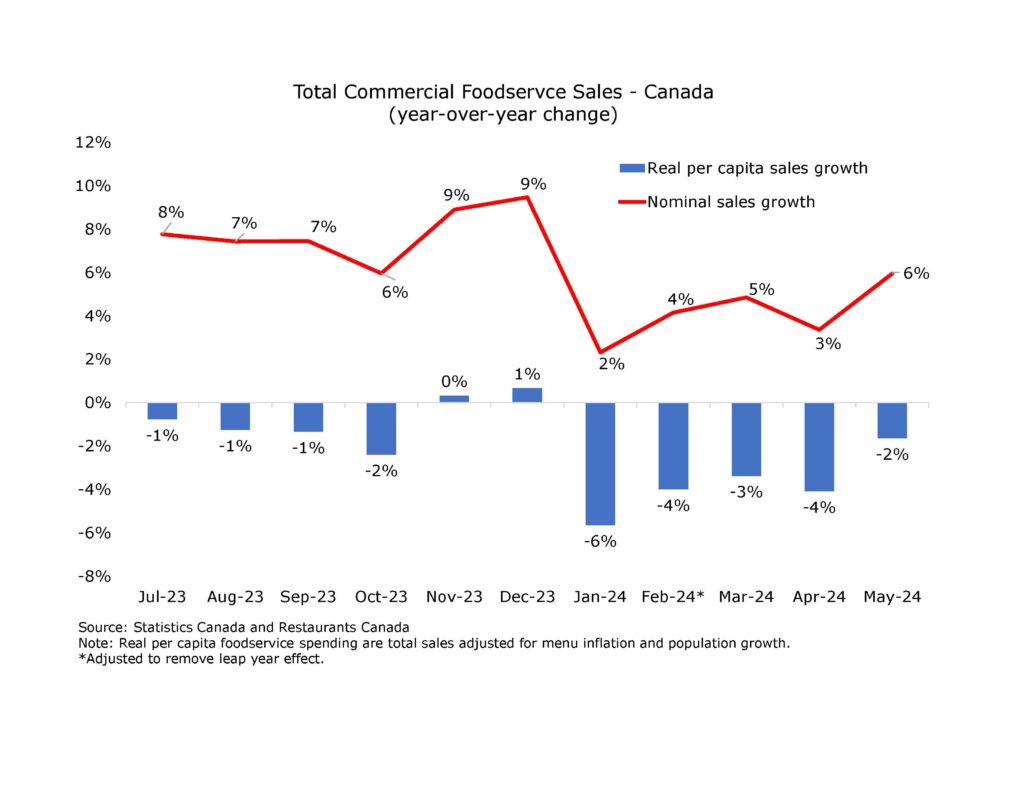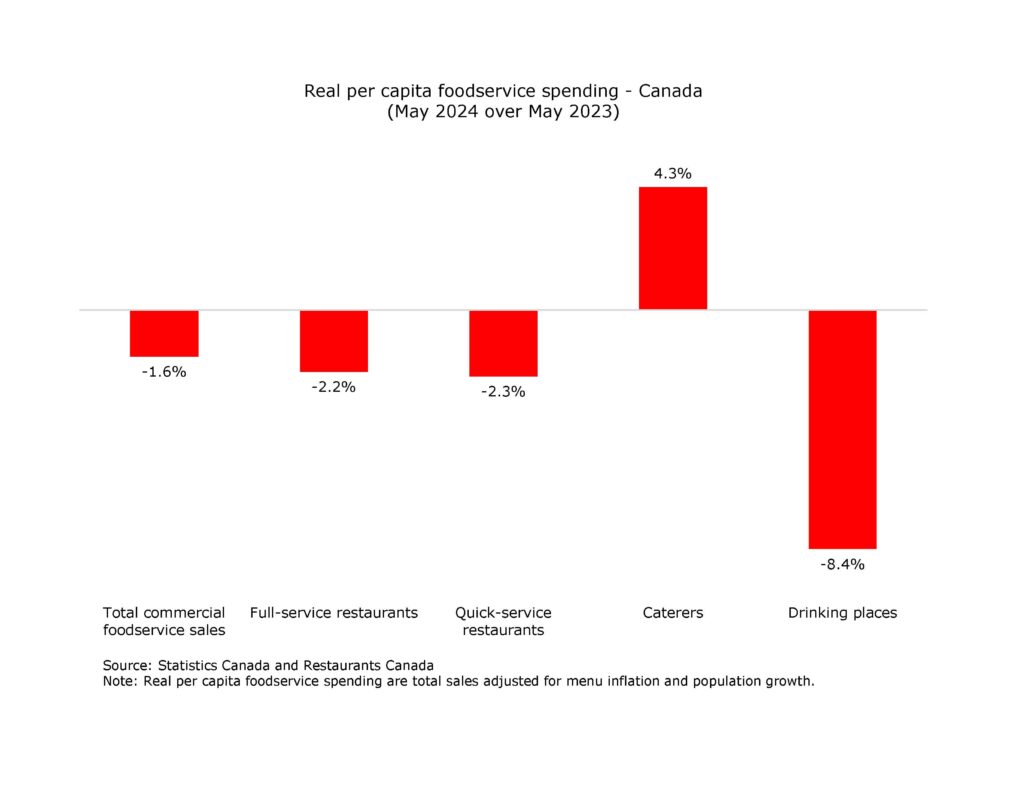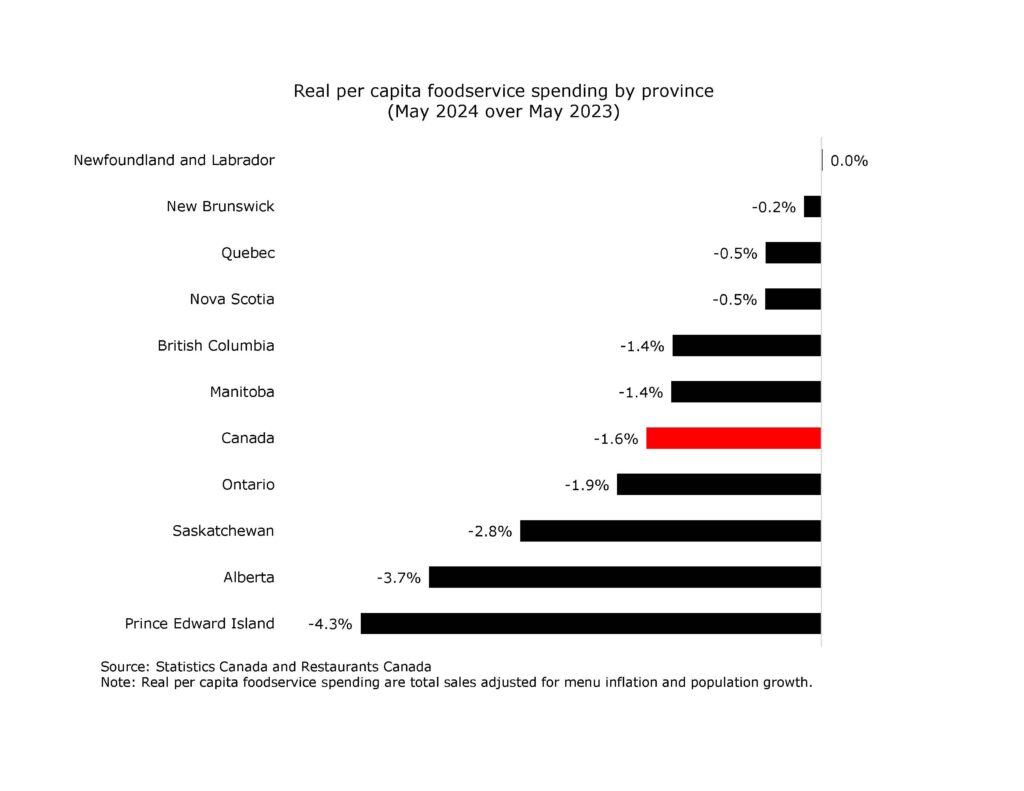Per capita restaurant spending slips 1.6% in May

Restaurants Canada’s Consumer Dining Index (CDI) recovered from May’s drop to 82.6, climbing up to 95.9 in June as Canadians returned to sourcing more meals from restaurants across all dayparts. Notably, Canadians aged 35 to 54-years-olds reported the largest increase in restaurant visit frequency in June over May compared to other age groups. The improvement in the CDI aligns with an overall increase in consumer confidence, as reported by the Conference Board of Canada. However, on a year-over-year basis, the CDI remains slightly below 2023 levels at 95.9 in June 2024, compared to 96.4 in June 2023.
On the surface, it appeared the restaurant industry was on the rebound in May following a sluggish start to the year. After all, year-over-year commercial foodservice sales improved to 5.9% growth in May following a 3.4% increase in April.
However, most of the gains in May were the result of higher menu prices combined with above-average population growth. Factoring out menu inflation of 4.2%, real commercial foodservice sales grew by a more modest 1.7% compared to May 2023. But real sales are not keeping pace with population growth (+3.4%). As a result, the average Canadian spent 1.6% less at restaurants in May then they did last year, once adjusted for menu prices and population growth. This cutback in spending reflects the higher cost of living, weak consumer confidence and the financial strain of higher interest rates.
From this perspective – sales adjusted for menu inflation and population growth – the average Canadian cut back the most at drinking places (-8.4%) in May. This segment includes bars, taverns and nightclubs. Meanwhile, real per capita spending at full- and quick-service restaurants also fell in May, slipping by just over 2%. Caterers were the only segment to report an increase, with per capita spending up 4.3%.
With the exception of Newfoundland & Labrador, real per capita spending fell across all provinces. Prince Edward Island reported the largest decline (-4.3%), reflecting a moderation in spending following several years of robust growth.
More details can be found in the Restaurant Industry at a Glance dashboard and in the latest Fast Facts report.
Looking ahead, the REACT survey indicates that the trends from June will continue into July with most Canadians intending to dine out similarly or more often through the month.





As the Chief Economist and Vice President of Research for Restaurants Canada, Chris Elliott manages and produces a comprehensive research program that has made Restaurants Canada a leading source of information for and about Canada’s $114-billion foodservice industry. Chris tracks and analyzes key industry and economic indicators and translates them into member reports and publications. He also provides research to support Restaurants Canada’s lobbying efforts on issues that affect foodservice operators – from payroll taxes to food costs.
Chris has worked with Restaurants Canada for over 20 years, has a Bachelor of Arts and Master Degree in Economics and specializes in economic modelling and forecasting.


